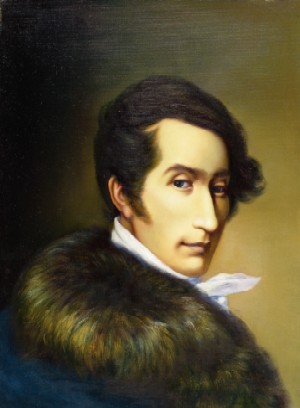Carl Maria von Weber.
https://en.wikipedia.org/wiki/Carl_Maria_von_Weber
History of the piece
Welcome to my comments on this exciting composition by Carl Marie von Weber. I’m
Terry Ewell and this is one of my favorite compositions for the bassoon. I first
performed the work as a student with the Seattle Symphony Orchestra. Later, as a
professional, I gave performances in Hong Kong, Washington State, and Changsha,
China. In 2017 I will be performing the work with the Mid-Atlantic Symphony
Orchestra under the direction of Julien Benichou.
The Andante and Hungarian Rondo (Andante e Rondo Ungarese) was first written in
1809 for Carl Maria von Weber’s brother Fritz, who played viola. Later, in 1813,
the work was arranged for Georg Friedrich Brandt. Although the bassoon version
was penned later, it actually received publication first in 1816. Other than
adding measures 56-59 to the bassoon version, the two original versions of the
composition are nearly identical.
It is safe to say that the composition plays a far more important role in the
bassoon repertoire than it does in the viola repertoire.
Versions of the composition
I recommend that you purchase the Universal Edition of the composition which was
published in 1992. William Waterhouse has carefully examined the earliest
sources for this publication. I did not have this edition available for my 1984
performance so there will be some differences between the recording at that time
and my current performance of the work.
The edition on imslp.org has the advantage of being available for free. However,
this version contains editor’s additions that depart from the original version.
http://imslp.org/wiki/Andante_e_rondo_ongarese,_Op.35_(Weber,_Carl_Maria_von)
Publisher Information: Paris: Evette & Schaeffer, 1922.
To avoid any copyright violations I will use the imslp version, which is public
domain, in these videos. However, I will edit the music with knowledge of the
Universal Edition and also include my performance suggestions.
Dissertation
I am delighted to recommend to you a dissertation by Melissa Kritzer on the
work. It is available for free on the Internet.
“Discovering the ‘Hungarian’ in Andante and Rondo: A Historical Approach to a
Standard Bassoon Solo” (Dissertation, Michigan State University, n.d.)
http://nycbassoon.com/dissertation.pdf
I will be referring to this dissertation many times in the three videos in this
series.
Articulations
Composers of wind music in the late eighteenth and early nineteenth centuries
provide little indication of articulation in their music. Where it is provided,
we should do it. But most often the determination of what to slur was left up to
the performer. This allows for customization of articulation for the instruments
and also for the performers’ taste.
My former colleague Rudolf Haken shows many slurs are included in his version of
the viola solo. Just compare this to the lack of slurs provided by Weber in the
bassoon part.
Character of the Piece
Have you wondered what makes the work “Hungarian?” Melissa Kritzer writes:
Today, style hongrois refers to the specific musical language used by Western
composers from the mid-eighteenth to the early twentieth-centuries to evoke the
performances of Hungarian Gypsies. P. 35
Dr. Kritzer provides further details for the rhythms in the work that evoke this
Hungarian flavor. Most of these stylistic references are found in the Rondo
movement as noted on page 39 of her dissertation. (see the video for the
examples with music)
In addition, other aspects of the Andante refer to musical idioms outside of the
Common Practice, European musical traditions. I will discuss this more in the
next video.
Copyright (c) 2016 by Terry B. Ewell. All rights reserved.
